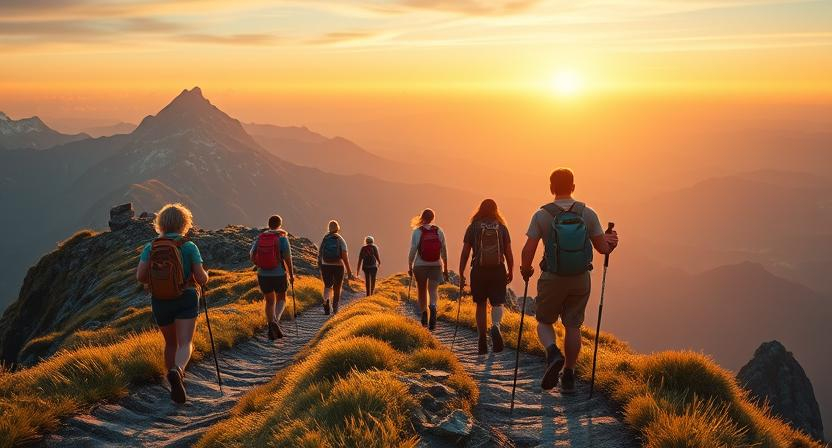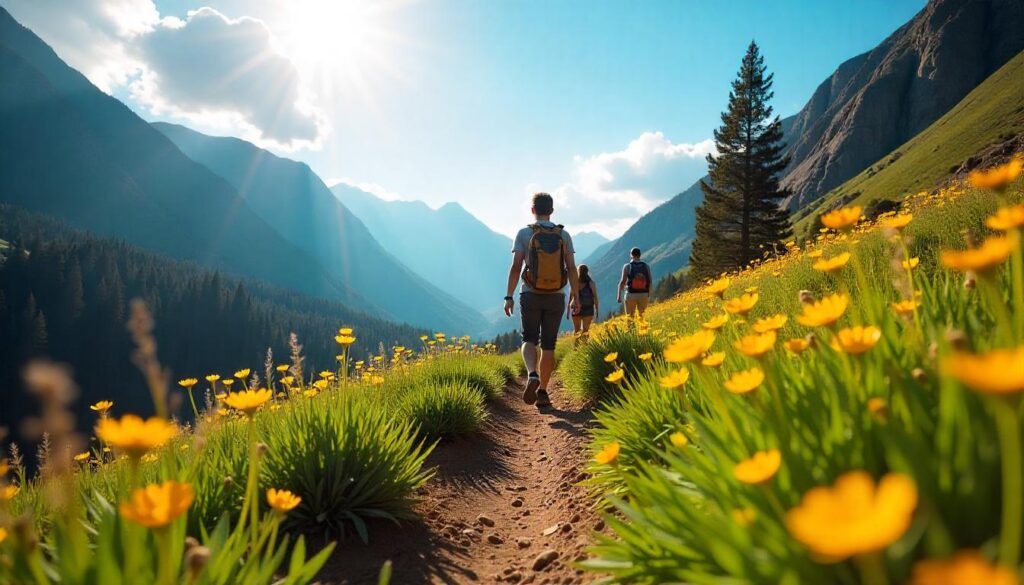
Hiking in Colorado offers an unparalleled experience for outdoor enthusiasts, from seasoned adventurers to beginner hikers. The state’s diverse terrain, from towering peaks to serene alpine lakes, makes it one of the best hiking destinations in the world. Whether you’re exploring the famed Colorado hiking trails or venturing off the beaten path, each hike in Colorado offers something unique, whether it’s breathtaking views, challenging ascents, or unforgettable natural beauty.
Colorado is a paradise for hikers, attracting thousands each year to experience the thrill of its stunning landscapes. But what makes a hike truly stand out? It’s not just about distance or difficulty; it’s about the blend of scenic vistas, accessible trails, and the rewards that await at the summit. Colorado’s vast landscapes are known for their variety—from rocky peaks and crystal-clear lakes to lush forests and cascading waterfalls. Each trail presents a unique set of experiences that make hiking in Colorado a must for anyone seeking adventure in nature.
When searching for the best hikes in Colorado, you’ll find trails for every level of hiker. Some are renowned for their accessibility, making them perfect for families or beginner hikers, while others challenge even the most seasoned hikers. The best hikes combine scenic beauty with the right balance of difficulty, offering both rewards for the body and the soul. If you’re looking for best hiking trails in Colorado or the most beautiful hikes in Colorado, this article will give you a comprehensive guide to the top 10 trails that should be on your bucket list in 2025.
Why Colorado is a Hiker’s Paradise
Colorado’s landscape is a playground for hikers, offering a mix of terrain that’s hard to beat. From the jagged peaks of the Rockies to tranquil lakes, dense forests, and picturesque waterfalls, the state provides diverse hiking opportunities for everyone. Whether you’re a casual weekend hiker or a dedicated mountaineer, Colorado’s natural beauty will captivate you at every turn. Below, we’ll explore why Colorado is considered one of the top Colorado hiking destinations and why it’s home to some of the best hiking spots in Colorado.
1. Unique Terrain: Rockies, Lakes, Forests, Waterfalls
Colorado is home to the Rocky Mountains, which is a central feature of the state’s landscape. The rugged mountainous terrain is famous for its challenging peaks, including Colorado’s iconic 14ers (mountains over 14,000 feet), which attract both beginner and advanced hikers. These towering peaks offer panoramic views that are simply breathtaking, making every step worth it.
In addition to the Rockies, the state is dotted with alpine lakes and forests, providing hikers with a variety of settings to enjoy. Colorado hiking trails often pass through lush woods, where hikers can experience the calm and peace of nature.
2. 300 Days of Sunshine: Year-Round Hiking Opportunities
One of the most appealing aspects of hiking in Colorado is the weather. The state enjoys over 300 days of sunshine each year, making it a year-round hiking destination. This consistent sunshine allows hikers to explore Colorado’s trails in any season, whether you’re enjoying a summer hike or embarking on a winter adventure.
The dry climate means that the trails, even after heavy snowfall, are often manageable, especially if you’re prepared for the conditions. In winter, the best winter hikes in Colorado lead you through snowy landscapes that offer a completely different hiking experience, with some trails perfect for snowshoeing or winter trekking.
In spring and fall, hikers can enjoy the colors of wildflowers or the changing foliage, while in summer, Colorado’s weather is ideal for high-altitude hikes, such as the iconic 14er hikes. The accessibility of hiking in Colorado throughout the year is one reason why it is regarded as one of the top places to hike in USA.
3. Variety of Trails for All Skill Levels
Colorado’s hiking spots cater to all levels of hikers, from beginner-friendly easy hikes in Colorado to strenuous climbs that challenge even the most experienced adventurers. Trails like St. Mary’s Glacier, which is a short and accessible hike, are perfect for beginners or families looking to get a taste of Colorado hiking without committing to a difficult or lengthy trail.
4. Unique Wildlife and Nature
Another reason Colorado is a hiking paradise is its rich wildlife. The state is home to diverse species, including elk, deer, mountain goats, and even black bears. Hiking through Colorado’s wilderness gives you the opportunity to spot these incredible animals in their natural habitat. The wildlife experience adds an element of excitement to the hikes, making each adventure even more memorable.
The 10 Best Hikes in Colorado (Handpicked & Expert-Approved)
Colorado is renowned for offering some of the best hikes in Colorado. Whether you’re looking for alpine lakes, dramatic cliffs, lush waterfalls, or challenging mountain ascents, the Centennial State has it all. In this comprehensive guide, we present ten expert-approved trails, covering every aspect from location and difficulty to insider advice, gear recommendations, and safety tips. Each trail is a blend of natural beauty, hiking adventure, and unique features that make hiking in Colorado an unforgettable experience.
Below, you’ll find detailed trail guides enriched with personal insights and expert tips—perfect for planning your next adventure.
1. Sky Pond – Rocky Mountain National Park
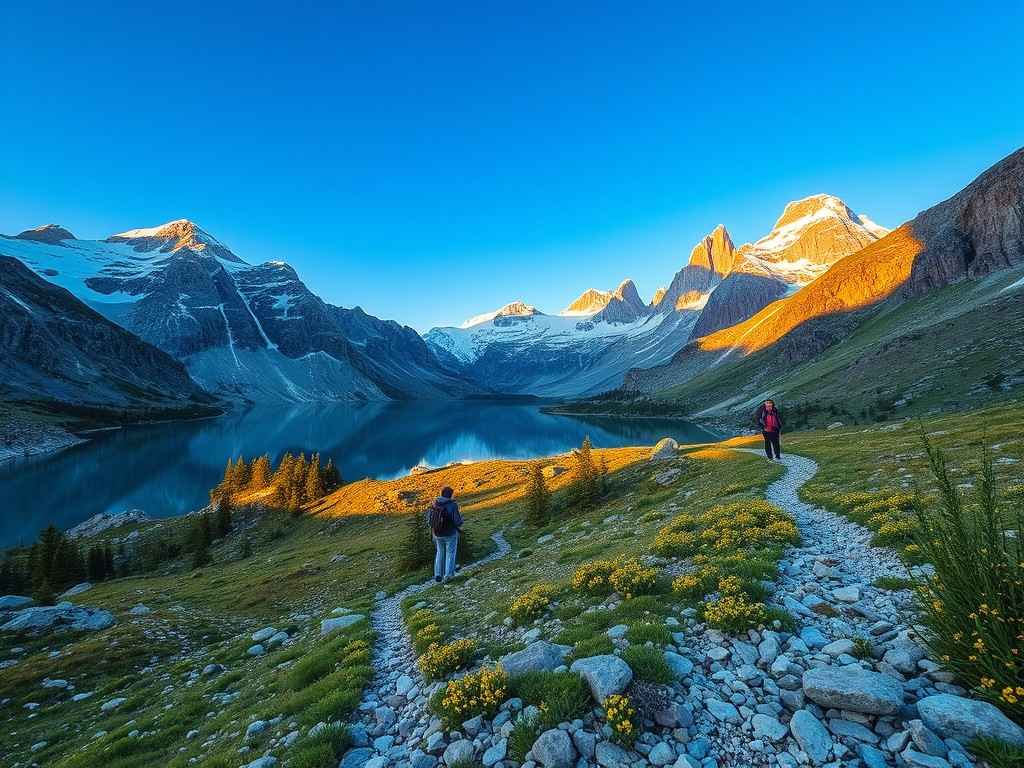
Location & Highlights:
Located in Rocky Mountain National Park, Colorado, Sky Pond is among the best hikes in Rocky Mountain National Park Colorado. It is famous for its spectacular alpine lakes and dramatic cliffs. The trail winds through high-elevation landscapes offering panoramic views of snow-capped peaks and dense forests.
Difficulty & Distance:
This trail is moderately challenging with an elevation gain that pushes your endurance. The Sky Pond route can be combined with the Emerald Lake and Dream Lake trails, providing a cumulative hike of around 6-8 miles with significant vertical gain. This makes it ideal for hikers with some experience under their belt.
Best Time to Hike:
For optimum conditions, early summer through early fall are ideal. In early summer, the snow melts gradually, revealing vibrant wildflowers, and by fall, the foliage introduces a riot of colors. Avoid the winter months unless you are well-versed in best winter hikes in Colorado.
Personal Tips & Insider Advice:
Be sure to carry a detailed map and check weather conditions before departing. Permits are required during peak seasons, so plan ahead. Our tip: start early in the morning to avoid crowds and capitalize on the softer morning light for photography. Dress in layers, as temperature changes rapidly at high altitudes.
Gear & Safety Suggestions:
A sturdy pair of hiking boots, trekking poles, and extra water are essential. Also, consider packing a lightweight rain jacket.
2. Hanging Lake – Glenwood Canyon
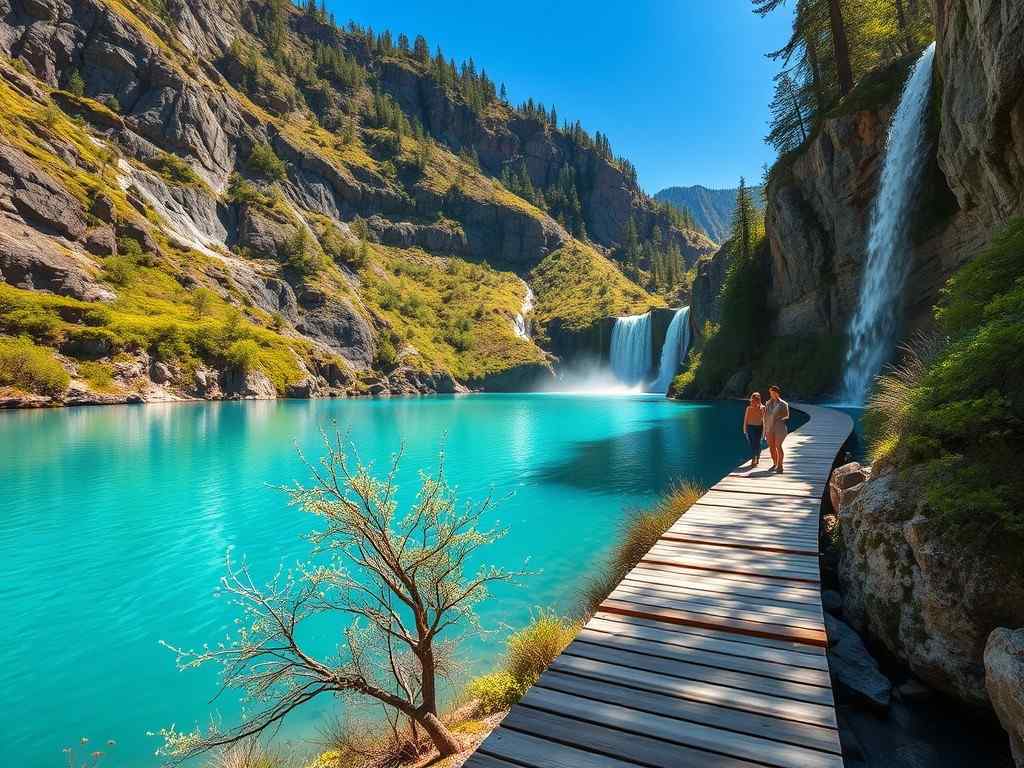
Location & Highlights:
Nestled in Glenwood Canyon, Hanging Lake is known for its crystal-clear turquoise waters and cascading waterfalls, ranking it among the best waterfall hikes in Colorado. The boardwalk and trail system are meticulously maintained to ensure a safe and scenic experience, while the unique formation of the lake against sheer canyon walls provides a picture-perfect setting.
Difficulty & Distance:
Hanging Lake is a moderately challenging hike, around 3 miles round-trip, with a notable elevation gain that demands some physical effort. The trail is well-marked but can be steep in places, making proper preparation essential.
Best Time to Hike:
It’s ideal to visit in the spring and early fall when the weather is mild. On weekdays or early in the morning, you can avoid the usual crowds. In summer, the trail might be busy; hence, planning for an off-peak time is crucial.
Personal Tips & Insider Advice:
Since this trail often requires a permit, secure your pass well in advance. I recommend checking online for the latest permit availability and scheduling your hike on a less crowded day. Pay attention to seasonal closures due to wildfires or maintenance schedules.
Gear & Safety Suggestions:
Pack water, sunscreen, a hat, and sturdy footwear for the boardwalk and rugged spots. Using trekking poles can help manage the steep sections safely.
3. Mount Bierstadt – Guanella Pass

Location & Highlights:
Mount Bierstadt, easily accessible via Guanella Pass, is celebrated as one of the best 14er hikes in Colorado. Its easier-to-climb route makes it one of the more accessible 14,000-foot peaks for families and fit hikers alike. The panoramic views at the summit are nothing short of breathtaking, making it an ideal introduction to high-altitude hiking.
Difficulty & Distance:
This hike is considered moderate to challenging, primarily due to the altitude rather than the technical climbing difficulty. The round-trip distance is approximately 8-10 miles with an elevation gain that challenges your stamina, though it is deemed one of the easier 14ers to hike in Colorado.
Best Time to Hike:
Early summer, when the snow is mostly gone from the trail, is best for attempting Mount Bierstadt. Late summer and early fall are also ideal, as the weather remains stable and the crowds are moderate.
Personal Tips & Insider Advice:
Acclimatize well before you start the hike. Hydrate frequently and take breaks to adjust to the thinner air. Many local hikers recommend starting the ascent early to catch the sunrise from the summit, which is one of the most memorable experiences in Colorado.
Gear & Safety Suggestions:
Due to the high altitude, it is recommended to pack extra water, high-energy snacks, a windbreaker, and a lightweight layering system. Moreover, use an altitude sickness prevention strategy and be mindful of the weather. For advice on high-altitude hiking, visit NOLS – High-Altitude Hiking Tips.
4. Emerald Lake Trail – Rocky Mountain National Park
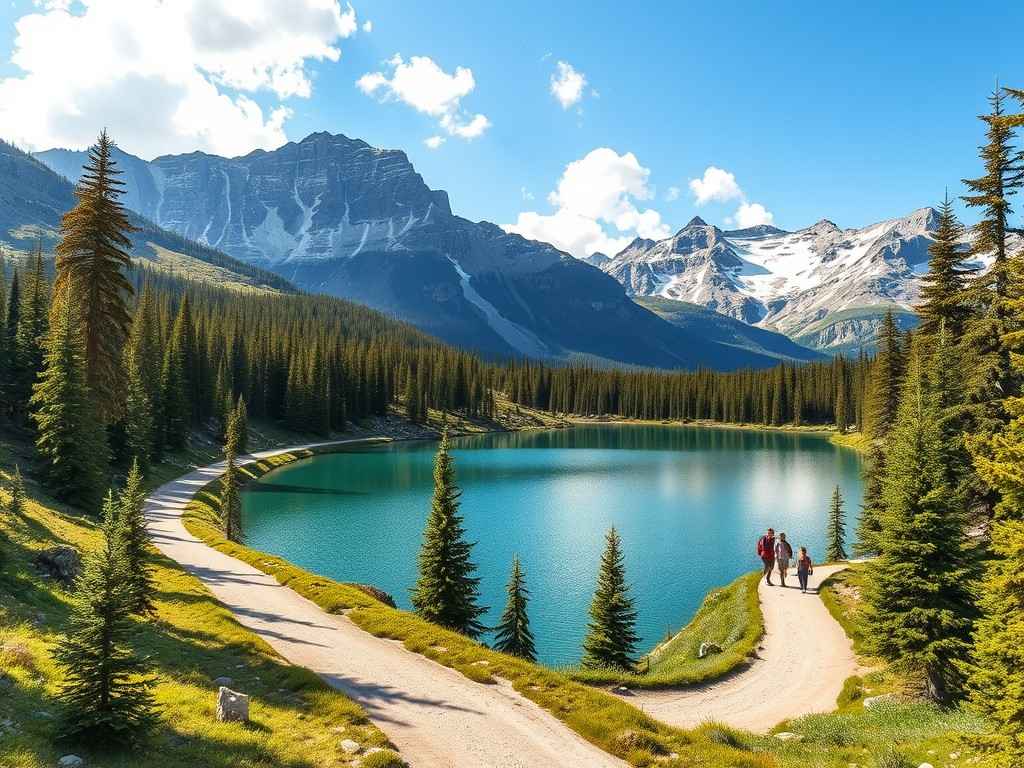
Location & Highlights:
The Emerald Lake Trail is another gem within Rocky Mountain National Park. Celebrated as one of the beautiful hikes in Colorado, this trail offers a serene and easily accessible path perfect for beginners. The journey winds past pristine lakes with reflective surfaces mirroring the surrounding peaks, making it a favorite spot for photographers and nature lovers.
Difficulty & Distance:
This is a relatively short and easy trail—typically 3 miles round-trip. With a modest elevation gain, it is suitable for hikers of all levels, making it one of the top choices for those who seek gentle yet rewarding hikes.
Best Time to Hike:
Late spring through early fall is optimal for this trail. In spring, the trail is lively with blooming wildflowers, while fall brings an infusion of autumn colors. Avoid peak summer heat by starting in the early morning.
Personal Tips & Insider Advice:
I highly recommend visiting this trail on a weekday to avoid the larger weekend crowds. Bring a camera to capture the tranquility of the lake and consider a light snack break by the water’s edge to fully take in the scenery.
Gear & Safety Suggestions:
Bring along a hydration pack, a pair of comfortable hiking shoes, and a sunscreen lotion. As with other trails in Rocky Mountain National Park, be aware of changing weather conditions, and check park alerts prior to your visit. For more detailed park information, see the National Park Service Rocky Mountain National Park page.
5. Royal Arch Trail – Boulder
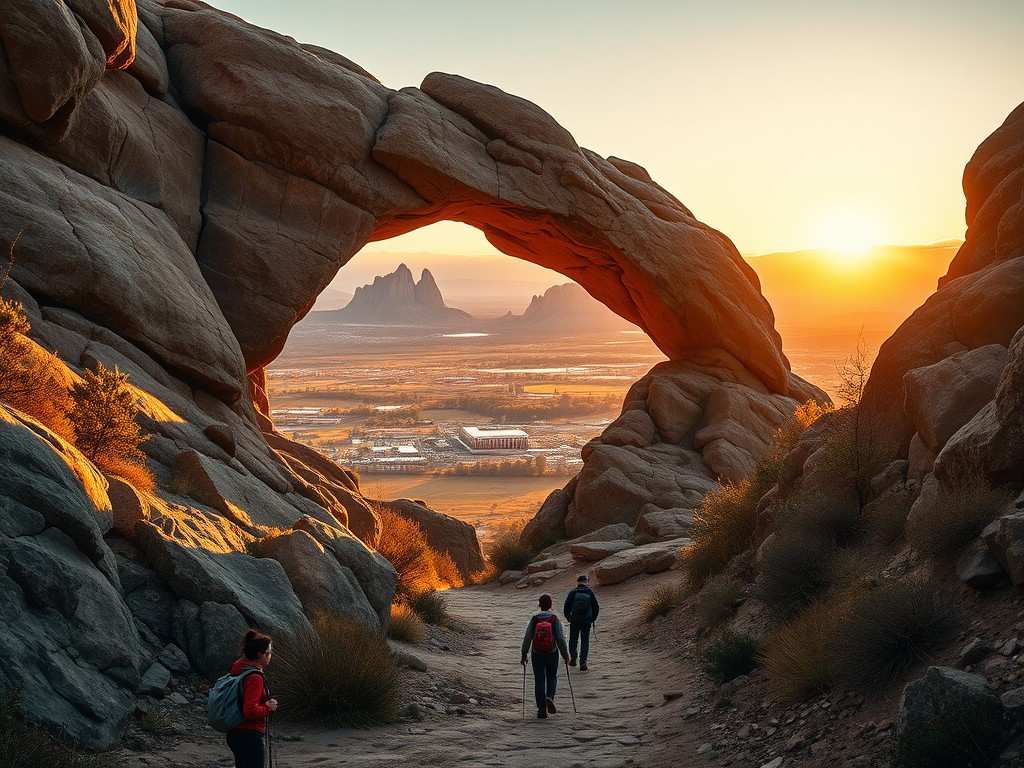
Location & Highlights:
Situated in Boulder, the Royal Arch Trail is one of the best hikes in Boulder Colorado. This trail is highly valued for its panoramic views of the city and the flatirons—a distinctive rock formation that defines Boulder’s landscape. The Royal Arch itself is a natural rock arch that creates an impressive focal point along the trail, adding to the allure of this route.
Difficulty & Distance:
Classified as a moderate hike, the Royal Arch Trail covers around 3.5 miles round-trip. The trail combines both uphill and downhill segments that challenge your endurance while offering intermittent rest points with mesmerizing views of the expansive valley below.
Best Time to Hike:
For the optimal experience, consider hiking in the early morning or late afternoon during the spring and fall months when the weather is cool and comfortable. Summer evenings are also a great time as the trail is less crowded and the sunset over the flatirons is truly spectacular.
Personal Tips & Insider Advice:
This trail is ideal for both individual hikes and group outings. Local insights suggest taking a slight detour to explore side trails that lead to secluded lookouts. It’s also a great chance to learn about Boulder’s geological history by observing the unique rock formations.
Gear & Safety Suggestions:
Comfortable hiking shoes and sun protection are a must. Since the trail involves some steep sections, trekking poles can be helpful. Always carry a small first-aid kit and a map or GPS device, especially if you decide to explore additional offshoot trails.
6. Manitou Incline + Barr Trail – Colorado Springs
Location & Highlights:
The Manitou Incline and the adjacent Barr Trail in Colorado Springs represent one of the most unique hiking experiences in the state. Known as one of the best hikes in Colorado Springs, the Manitou Incline is infamous for its steep, almost stair-like ascent that challenges even the fittest hikers. The Barr Trail, which serves as either an alternative or a descent after the incline, is equally captivating.
Difficulty & Distance:
The Incline is extremely challenging due to its nearly vertical steps, while the Barr Trail, though strenuous, offers a more gradual descent. Combined, the hike can range from moderate to very challenging, depending on your approach and stamina. This makes it ideal for adventurers who enjoy pushing their limits in an urban wilderness setting.
Best Time to Hike:
Early mornings or late afternoons during the spring and fall seasons are recommended. These times provide cooler temperatures and reduced risk of heat exhaustion. Due to its difficulty, it’s best attempted when you’re well-rested and hydrated.
Personal Tips & Insider Advice:
Before embarking on this hike, it is advisable to consult local trail reports, as weather conditions can change rapidly. I suggest acclimating beforehand if you’re not used to Colorado’s high elevation. This hike is also popular among fitness enthusiasts seeking a rigorous workout, so pace yourself accordingly.
Gear & Safety Suggestions:
Bring plenty of water and energy-boosting snacks. High-quality athletic footwear and moisture-wicking clothing are essential. For safety, consider hiking with a buddy and carry a portable charger for your phone.
7. Bear Peak – Boulder
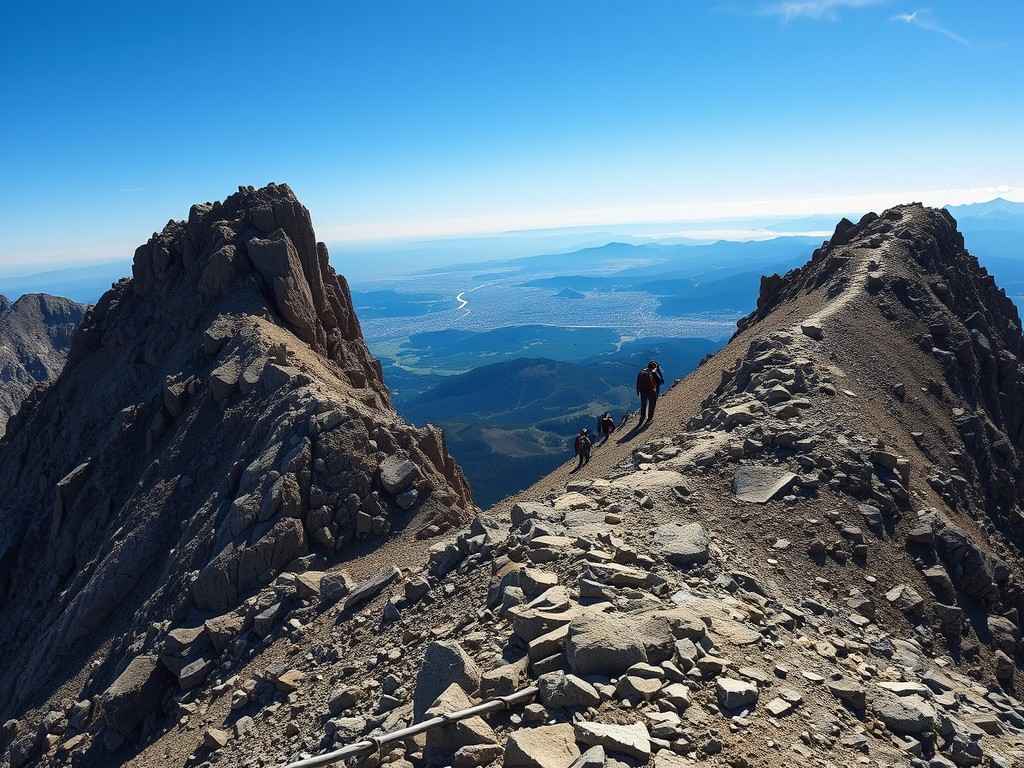
Location & Highlights:
A favorite among locals, Bear Peak is located in Boulder and is known for offering some of the most scenic hikes in Colorado. Its challenging ascent rewards hikers with stunning summit views that overlook the entire Boulder valley. This trail is celebrated for its rough terrain and adventurous spirit, making it a must for those who crave a physical challenge paired with breathtaking natural beauty.
Difficulty & Distance:
Bear Peak is considered challenging with a considerable elevation gain that tests your physical limits. The round-trip distance is roughly 5-6 miles, with portions of the trail demanding technical footing. This hike is best suited for experienced hikers looking for a demanding, rewarding climb.
Best Time to Hike:
Early morning or late afternoon during the spring and fall seasons are highly recommended when the weather is cooler and the trail less congested. In summer, starting early is vital to beat the heat and avoid the midday sun that can make the climb more arduous.
Personal Tips & Insider Advice:
For Bear Peak, pacing is crucial. I advise frequent short breaks to acclimate and hydrate. This trail also offers a strong sense of achievement once you reach the summit, making it one of the top hikes in Colorado for those wanting a challenging yet visually rewarding experience.
Gear & Safety Suggestions:
A reliable pair of hiking boots, trekking poles, and a layered clothing system are key. Given the strenuous nature of this trail, bring an ample supply of water and energy snacks. For expert advice on trail safety and preparation, check out resources from NOLS – Outdoor Safety.
8. Blue Lakes Trail – San Juan Mountains

Location & Highlights:
The Blue Lakes Trail in the San Juan Mountains is hailed as one of the prettiest hikes in Colorado. It features a series of vibrant blue lakes set amid wildflower-filled valleys that change hues with the movement of the sun. This trail is also known as one of the cool hikes in Colorado, thanks to its refreshing natural landscapes and tranquil ambience.
Difficulty & Distance:
This moderate trail spans approximately 5-7 miles round-trip, with gentle to moderate elevation gain that makes it accessible to a broad range of hikers. It is ideal for those who appreciate nature’s subtleties and enjoy a less technical yet scenic hike.
Best Time to Hike:
Summer is the prime season for the Blue Lakes Trail, when wildflowers bloom and the alpine lakes are at their clearest. Early mornings or late afternoons offer softer light for photography while avoiding the busiest crowds.
Personal Tips & Insider Advice:
Local hikers often advise spending extra time at the lakes to take in the captivating vistas and to have a picnic by the water’s edge. It’s a great trail for families and hikers seeking a visually stunning, relaxed hike. Due to changing weather at higher altitudes, always check the forecast and plan accordingly.
Gear & Safety Suggestions:
Carry a hydration pack, wear sun-protective clothing, and bring a light jacket for cooler temperatures at higher elevations. Additionally, a good pair of trail shoes will support the uneven terrain.
9. Elk Falls Overlook – Staunton State Park
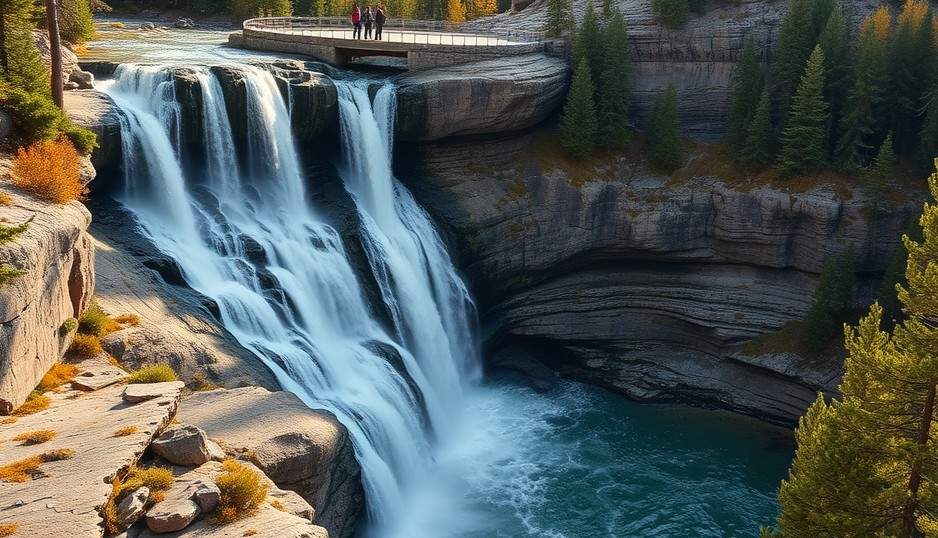
Location & Highlights:
Located in the picturesque Staunton State Park, Elk Falls Overlook is one of the best hikes in Denver Colorado. This trail is perfect for those seeking a convenient yet rewarding hike close to the city. The route features mesmerizing waterfalls, unique rock formations, and expansive vistas that attract photographers and nature lovers alike.
Difficulty & Distance:
Elk Falls Overlook is a well-suited day hike that spans approximately 4-5 miles round-trip. The trail offers a steady, moderate ascent with gradual elevation gains, making it accessible to both novice and experienced hikers looking for a scenic, day-long outing.
Best Time to Hike:
This trail is best hiked during spring and fall when the weather is mild and the natural elements—waterfalls and foliage—are at their most vibrant. Early mornings help avoid the summer heat and crowded trails, enhancing your overall experience.
Personal Tips & Insider Advice:
Hikers are encouraged to take time at the falls to rest and absorb the serene beauty of the waterfall. Using the overlook as a photo spot is highly recommended for capturing the natural splendor of the area. When planning your visit, check the Staunton State Park website for current trail conditions and any scheduled maintenance.
Gear & Safety Suggestions:
Wear comfortable hiking shoes, bring sufficient water, and use insect repellent in the warmer months. Additionally, a light snack and a camera are advisable for the scenic vistas along the trail.
10. Mohawk Lakes Trail – Breckenridge
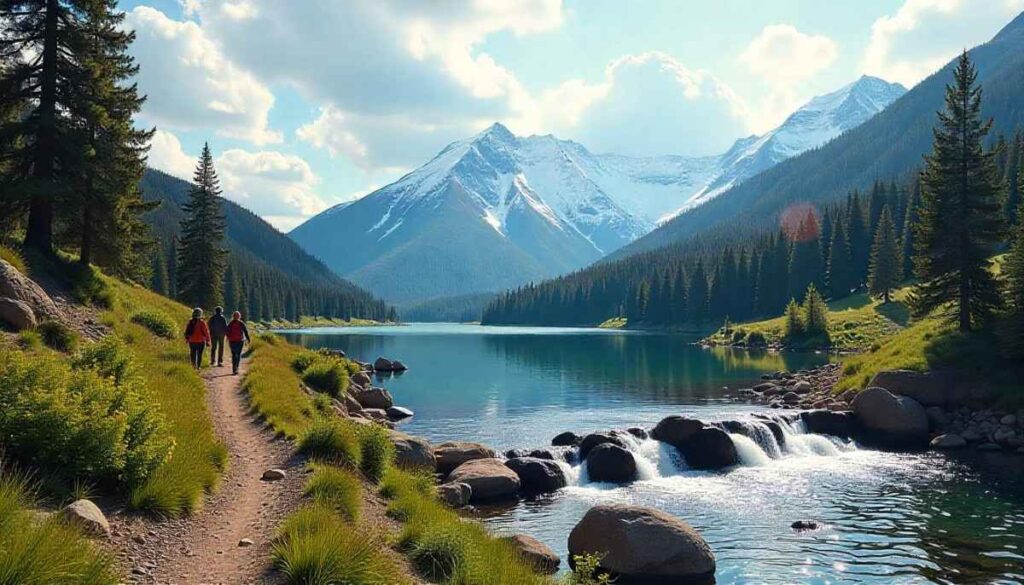
Location & Highlights:
Mohawk Lakes Trail in Breckenridge is celebrated as one of the best lake hikes in Colorado. The trail leads you through a rich tapestry of rugged mountain terrain, ancient ruins, and cascading waterfalls, culminating at a series of beautiful upper lakes. This trail combines historical intrigue with natural splendor, offering a unique perspective on Colorado’s wilderness.
Difficulty & Distance:
This trail is moderate to challenging in terms of physical exertion, spanning over 7 miles round-trip with notable elevation gain. The rugged terrain and occasional rocky paths mean this hike demands a good level of fitness and endurance, suitable for experienced hikers seeking an immersive adventure.
Best Time to Hike:
Late spring through early fall are ideal seasons for Mohawk Lakes Trail. In the summer, the trail is at its most vibrant, with the alpine lakes reflecting clear blue skies and the waterfalls in full flow. It is recommended to start early in the day to have ample time to explore and enjoy the remote beauty.
Personal Tips & Insider Advice:
This trail is best experienced with a day packed with exploration and relaxation. Many local hikers suggest bringing a packed lunch to enjoy by the lakes and taking periodic breaks to soak in the scenery. The area offers excellent opportunities for wildlife spotting, so keep your binoculars handy.
Gear & Safety Suggestions:
Due to its extended nature, pack extra water, snacks, and a first-aid kit. Hiking poles can help with the rocky sections, and layered clothing is advised due to the variable alpine weather. For enhanced safety, always inform someone of your hiking plan and expected return time.
Colorado Hiking Trails Comparison: Distance, Elevation, Difficulty, and Best Time to Hike
| Trail Name | Distance (miles) | Elevation Gain (feet) | Difficulty (Rating) | Best Time to Hike | Trail Highlights |
|---|
| Sky Pond – Rocky Mountain National Park | 9.0 | 1,700 | Moderate ★★★☆☆ | June – September | Alpine lakes, dramatic cliffs, rugged beauty |
| Hanging Lake – Glenwood Canyon | 2.0 | 1,000 | Moderate ★★★☆☆ | April – October | Turquoise lake, boardwalks, waterfalls |
| Mount Bierstadt – Guanella Pass | 7.0 | 2,850 | Hard ★★★★☆ | June – September | Easier 14er, stunning summit views |
| Emerald Lake Trail – Rocky Mountain National Park | 3.6 | 1,000 | Easy ★★☆☆☆ | June – September | Beautiful lake, perfect for beginners, easy access |
| Royal Arch Trail – Boulder | 3.5 | 1,400 | Moderate ★★★☆☆ | April – November | Panoramic views of Boulder, moderate challenge |
| Manitou Incline + Barr Trail – Colorado Springs | 5.0 | 2,000 | Hard ★★★★★ | March – October | Challenging stairs, great views from summit |
| Bear Peak – Boulder | 6.0 | 2,100 | Hard ★★★★☆ | May – October | Most scenic hike in Boulder, challenging climb |
| Blue Lakes Trail – San Juan Mountains | 6.6 | 1,700 | Moderate ★★★☆☆ | June – September | Wildflower-filled valleys, picturesque lake |
| Elk Falls Overlook – Staunton State Park | 3.2 | 800 | Moderate ★★★☆☆ | May – October | Waterfalls, rock formations, nearby wildlife |
| Mohawk Lakes Trail – Breckenridge | 7.0 | 2,000 | Moderate ★★★☆☆ | June – September | Waterfalls, ruins, upper lakes |
Choosing the Best Hike for You

Deciding on the best hikes in Colorado can be both exciting and overwhelming because the state offers an array of options suited to every preference. Whether you are planning to tackle rugged mountain paths or enjoy a gentle stroll through nature, making the right choice requires considering several factors. In this section, we’ll walk you through the essential aspects—difficulty levels, seasonal considerations, regional highlights, and hiker type recommendations—to help you choose the perfect trail that meets your needs and expectations.
Difficulty Levels
When it comes to the difficulty levels of Colorado hiking trails, understanding your personal fitness and experience is key to selecting a suitable route. In Colorado, trails range from easy hikes in Colorado that are perfect for beginners or families to challenging routes that push your endurance and technical skills. For those who are just starting out, it is recommended to try shorter, flat trails that have gentle inclines, so you can enjoy the stunning views without becoming overly fatigued. For example, trails like St. Mary’s Glacier near Denver provide a blend of scenic beauty and a manageable pace, making it a prime choice for a leisurely yet fulfilling day hike.
Seasonal Considerations
The best time to embark on a hike in Colorado can greatly depend on the season, as each season transforms the trails in unique and captivating ways. For instance, during the colder months, best winter hikes in Colorado allow you to experience snow-capped peaks and crisp, fresh air. Winter hiking, however, demands extra preparation for which you should visit our hiking in cold weather guide.
In contrast, autumn reveals a spectacular display of vibrant fall colors across the state. Best fall hikes in Colorado are popular for their breathtaking landscapes where the aspen trees change into a rich palette of yellow and gold. Trails in areas like the foothills near Denver and Colorado hiking bucket list spots offer serene, cool weather that makes hiking a particularly pleasant experience in the fall. Many photographers plan trips during this time to capture the enchanting scenery.
Summer in Colorado, with over 300 days of sunshine, is arguably one of the best times to enjoy Colorado hiking destinations. During summer, trails like those around the Rocky Mountain National Park Colorado and best lake hikes in Colorado provide refreshing views of alpine lakes and lush meadows. However, the high temperatures and intense sun in some areas demand adequate hydration, sun protection. For this our summer walking guide will be most relevant and effective.
Regional Highlights
Colorado is vast and diverse, offering an impressive array of hiking opportunities in various regions. Each region boasts its own unique charm and landmarks that contribute to the overall hiking experience. For instance, the trails around Boulder, Colorado are legendary for their dramatic flatirons and accessible routes, making them some of the best hikes in Boulder Colorado. These trails provide a mix of urban and wild experiences, combining the rugged outdoors with the convenience of nearby city amenities.
In the metropolitan region, Denver serves as a gateway to some of the most accessible hikes in the state. Trails near Denver are perfect for those seeking a quick escape from the hustle and bustle of city life. Whether you’re exploring best hikes in Denver Colorado or venturing out to nearby trails, the proximity to urban areas ensures that you have access to excellent infrastructure, including well-maintained paths, visitor centers, and ample parking.
Another region rich with hiking opportunities is Colorado Springs, famed for landmarks such as Garden of the Gods and the challenging Best day hikes in Colorado Springs routes. The dramatic rock formations, combined with stunning city views, make this area a favorite among both casual hikers and enthusiasts looking for more challenging routes. The mix of natural beauty and accessibility ensures that trails in Colorado Springs consistently rank among the best hiking spots in Colorado.
Hiker Type Recommendations
Understanding the type of hiker you are plays a crucial role in selecting the right trail, and in Colorado, options are plentiful for every hiker type. For families, family-friendly hikes in Colorado are those that offer safe, accessible paths with minimal elevation gain. For families, trails like those in nearby Denver or Rocky Mountain National Park provide a perfect blend of natural beauty and manageable difficulty, ensuring that even the little ones can enjoy the outdoors safely.
For those who enjoy outdoor activities with a furry friend, dog-friendly hikes in Colorado are a must. Trails in areas like Colorado Springs or near Boulder are known for their open spaces where dogs can roam (provided they’re on leash), and many parks even have designated dog-friendly areas. It’s important to check the specific guidelines for each trail since some areas might restrict pets to protect wildlife and the environment.
Solo adventurers often prefer hikes that offer a mix of challenge and solitude. If you’re embarking on a solitary journey, you might want to consider trails that are moderately challenging yet not too remote. Best hiking spots in Colorado for solo adventurers often include routes with clear markers and mobile reception for safety.
For those particularly enchanted by nature’s water features, waterfalls, and alpine lakes, the category of waterfall seekers is perfect. Trails that lead to breathtaking cascades and pristine lakes, such as Hanging Lake and other best waterfall hikes in Colorado, offer not only physical exercise but also moments of meditative beauty.
Expert Insights and Practical Hiking Tips
Every seasoned hiker agrees that preparation is half the battle. When planning your next adventure in Colorado, make sure to research your chosen trail thoroughly using reliable sources.
Another key tip is to always pack essentials such as adequate water, healthy snacks, a first-aid kit, and weather-appropriate clothing. Expert hikers often recommend carrying extra layers even during summer, as the weather in high-altitude areas like those in Colorado hiking destinations can change rapidly.
Finally, incorporating internal resources can further enrich your hiking experience. For instance, linking to our essentials of hiking guide gives you a comprehensive checklist of necessities tailored to Colorado’s diverse environments.
Hidden Gems & Underrated Trails Worth Exploring
Colorado is famous for its iconic trails, but the true beauty of Colorado hiking also lies in its hidden gems—those underrated, lesser-known trails that offer extraordinary experiences without the crowds. In southern and western Colorado, you can find paths that not only deliver unique scenic beauty but also inspire your Colorado hiking bucket list.
In southern Colorado, you’ll discover some of the best hikes in southern Colorado that traverse rugged desert landscapes, ancient rock formations, and remote canyons. These trails often feature dramatic geological features and vast, open spaces where the horizon seems to stretch endlessly. As you explore these areas, take note of the native wildflowers, unique flora, and the solitude that comes with fewer hikers. One of the best parts of these trails is that they often allow for stargazing at night, making them perfect for those who want to add a cosmic experience to their adventure.
Over in western Colorado, the landscape is just as captivating yet distinct from the east. The best hikes in western Colorado feature deep canyons, high desert plateaus, and rugged mountain terrains that give every step a sense of adventure. These trails are known for their untouched beauty and often require a bit more planning, with fewer facilities along the way compared to the more popular routes. The remoteness of these trails means that you might encounter wildlife in their natural habitat and witness landscapes that seem to have been preserved in time—a true paradise for the avid hiker seeking an escape from the hustle and bustle of crowded trails.
Best Hikes Near Major Cities

Colorado’s cities serve as gateways to exceptional outdoor adventures. Whether you’re a local or a visitor, the trails near Denver, Colorado Springs, and Boulder provide opportunities for quick escapes into nature. These urban-adjacent hikes offer convenience without sacrificing the essence of Colorado hiking, making them excellent options for a day trip.
Near Denver
The region surrounding Denver boasts a variety of trails that are easily accessible and perfect for a quick outdoor escape. Among these, best hikes in Denver Colorado provide engaging and diverse experiences—from peaceful strolls through wooded parks to moderately challenging routes with panoramic city views. In addition, many trails are part of the best Colorado hikes near Denver collection, ensuring that both novice and experienced hikers find suitable options.
Near Colorado Springs
Just a short drive from the city, the hiking spots around Colorado Springs are celebrated for their majestic rock formations and waterfalls. These trails include some of the best day hikes in Colorado Springs that offer a refreshing mix of natural beauty and quick access to urban amenities. Waterfall trails, such as those found near Garden of the Gods, allow you to experience cascading water features alongside dramatic red rock landscapes.
A day hike in Colorado Springs often involves a moderate trek that highlights the striking natural sculptures and scenic vistas that define the area. This balance of natural wonder and accessibility makes these trails particularly popular among both locals and tourists.
Near Boulder
Boulder is a hiker’s haven with an abundance of easy access trails and local favorites that have become synonymous with the vibrant outdoor culture in the region. The best hiking Colorado experiences near Boulder often include routes that lead through iconic flatirons and provide unobstructed views of the city below. These trails are designed for all skill levels, making them ideal for both family outings and individual adventures.
For those new to hiking in Colorado, the trails near Boulder offer well-marked paths, clear signage, and a friendly atmosphere that encourages exploration. Locals appreciate these trails for their ease of access and the rich mix of terrain that ranges from smooth, paved paths to more rugged, natural tracks.
Tips for Safe and Enjoyable Hiking in Colorado
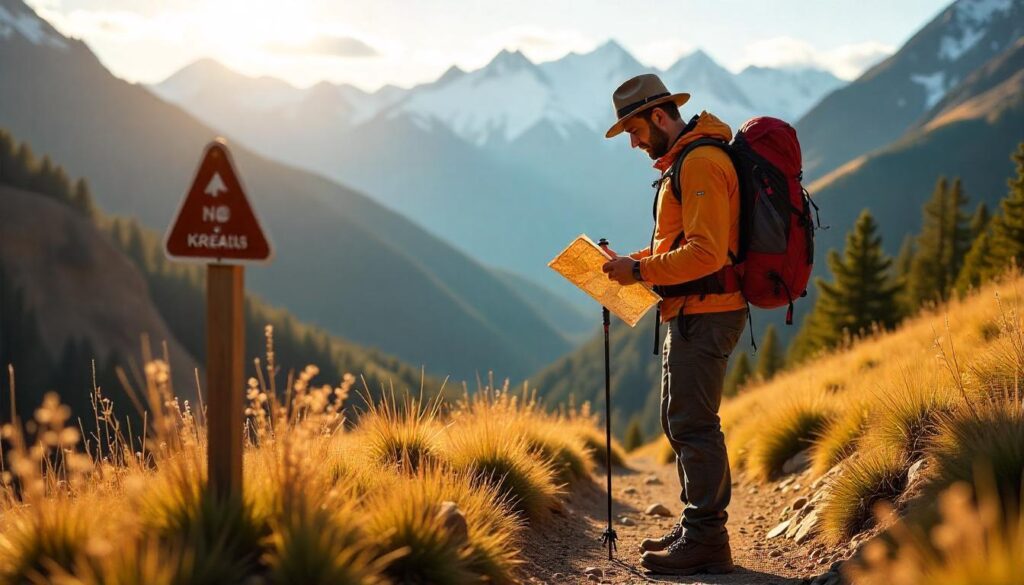
When venturing out for hiking in Colorado, your safety and enjoyment are paramount. Following these tips will not only protect you on the trail but also ensure a sustainable and respectful outdoor experience.
Altitude Awareness
Colorado’s high elevation can be challenging even for experienced hikers. It is critical to acclimate gradually and monitor your body for symptoms of altitude sickness such as headaches or nausea. Always carry plenty of water and consider pacing yourself to adjust to thinner air at high altitudes.\
Leave No Trace
Practicing leave no trace principles is essential for preserving the pristine beauty of Colorado hiking destinations. Always pack out all waste, stick to established trails, and respect wildlife to minimize your impact on the environment. This approach not only helps protect these natural wonders for future hikers but also maintains the quality and experience of the trails. For comprehensive guidelines, visit the leave no trace center for outdoor ethics.
Trail Etiquette
Following proper trail etiquette ensures a safe and pleasant experience for everyone on the trail. Yield to uphill travelers, keep noise levels low, and always be courteous by stepping aside for faster-moving groups or cyclists. Demonstrating respect towards fellow hikers helps maintain the high standards of hiking spots in Colorado and fosters a welcoming outdoor community. For additional tips on trail etiquette, refer to our internal post on Hiking Safety Tips.
What to Pack and Wear (Colorado Hiking Essentials)
Being well-prepared is a cornerstone of enjoying Colorado’s diverse hiking trails. Pack essentials such as water, snacks, sunscreen, first-aid supplies, and appropriate clothing layers to adapt to changing weather. Sturdy footwear is a must, especially for trails with rocky or steep sections, while a rain jacket and hat can protect against unpredictable weather conditions.
FAQs about Hiking in Colorado
What is the best time of year to hike in Colorado?
The best time to hike in Colorado is typically from late spring through early fall when trails are clear, weather is stable, and the scenery—ranging from blooming wildflowers to autumn colors—is at its peak. This period offers optimal conditions for hiking in Colorado and ensures a safe and enjoyable experience.
Are there beginner-friendly trails?
Yes, Colorado offers a wide variety of beginner-friendly trails such as easy hikes in Colorado like the St. Mary’s Glacier trail and paths in the foothills near Denver. These trails are well-marked, have moderate elevation gains, and provide stunning views while ensuring a safe and accessible adventure for newcomers.
Do I need permits for popular trails?
Certain popular trails in Colorado, such as Hanging Lake and select routes in Rocky Mountain National Park, require permits due to high demand and to protect sensitive environments. It is important to check the specific trail requirements ahead of time on official park websites or trusted platforms like AllTrails to secure your permit and ensure a smooth hiking experience.
What are the most scenic day hikes?
Some of the most scenic day hikes in Colorado include trails like the Royal Arch Trail in Boulder, Bear Peak for panoramic vistas, and Elk Falls Overlook near Denver, which features stunning waterfall views and unique rock formations. These hikes provide quick yet unforgettable escapes into Colorado’s breathtaking natural landscapes.
Conclusion
In conclusion, this comprehensive guide on the best hikes in Colorado offers detailed insights into diverse trails—from iconic routes in Rocky Mountain National Park to hidden gems near major cities. We’ve combined expert insights with real-world hiking tips to ensure that whether you’re a seasoned adventurer or a beginner exploring hiking in Colorado, you have the tools and knowledge needed for a safe and fulfilling journey.
Our guide delved into seasonal picks, trail selection based on difficulty, location-specific advice, and essential safety tips. By incorporating practical tips, gear recommendations, and strategies like Leave No Trace. For more information and related hiking resources, refer to our internal guides such as the best training plan for hiking and hiking guide for beginners.
Embrace the adventure, stay prepared, and let Colorado’s breathtaking landscapes inspire your next hiking expedition. Enjoy the journey through scenic vistas, challenging paths, and unforgettable experiences that define Colorado hiking destinations. Happy hiking!
Ethan Marlowe is an experienced hiker and outdoor gear specialist based in Colorado. With over 7 years of hands-on experience trekking through the Rockies, Pacific Northwest, and East Coast trails, he delivers practical advice, expert gear reviews, and survival insights. His goal is to help hikers of all levels make smarter decisions on and off the trail.

